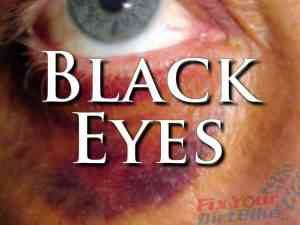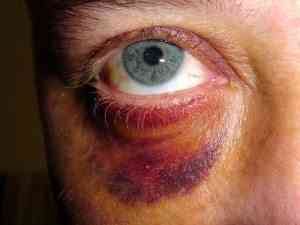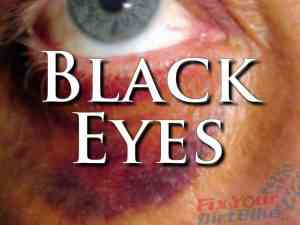How To Identify & Treat The Symptoms Of A Black Eye
Black eyes might make you a little less attractive (or a little more), but they are rarely considered to be a severe injury or require immediate medical attention. However, it’s not how to treat a black eye that you need to worry about; it’s the cause of the black eye. So even with a “minor” injury like a black eye, you still want to take the necessary precautions and first aid measures to ensure that there aren’t any other, more major underlying injuries.
 What Is A Black Eye?
What Is A Black Eye?
A black eye is formed from bleeding under the skin’s surface. Usually, a black eye is no cause for concern; however, with the presence of blood, even if it’s under the skin, comes the potential of a severe injury. In this case, the serious injuries will almost always involve either the eye or skull.
Eye-related Injuries
Any trauma to the eye region can potentially cause hyphema – a condition in which blood seeps into the eye(s). The bleeding can occur in one or more parts of the eye – the cornea, iris, or pupil. If not handled immediately, it can potentially lead to permanent vision impairment or blindness.
Skull Injuries
A hard enough blow to the face can fracture the skull. And, of course, a fractured skull can cause severe and permanent damage. Black eyes across both eyes (commonly called raccoon eyes) and other head injuries sustained from the trauma indicate an increased risk of a fracture.
Black Eye Symptoms
The symptoms of a black eye are usually very easy to detect. Here’s what you want to look for:
Typical Symptoms Of A Black Eye
- Darkening or reddening of the impacted area shortly after the incident
- Dark bruises that form around one or both eyes (usually a few minutes after the incident)
- Pain and swelling of the impacted area

Serious Symptoms
- Vision impairment – blurred vision, seeing double, and loss of vision
- Inability or struggle to maneuver eye
- Severe pain at any of the impacted areas
- Bleeding from nose or eye(s)
How To Treat a Black Eye
Most typical black eye issues can be treated using the Basic First Aid, but black eyes that include more severe symptoms will need Serious Treatment:
Basic Black Eye Remedy
- Apply ice or a cold rag to the impacted area as soon as possible. This will help reduce swelling. Be as gentle as possible, and don’t put any pressure on the actual eye.
- If possible, take pain medication. Any of the OTC pain relievers will work fine: Advil, Tylenol, Ibuprofen, Aleve, or any of their generic alternatives.
- Protect the impacted area. Avoid as much contact with the affected area as possible. A bandage or other protective material can be used to help prevent contact if needed.
Serious Treatment
- Apply ice to the impacted area in the same way you would with a Typical Treatment.
- Look closely for evidence of blood in the impacted area’s eye. Check the cornea, the iris, and the pupil. If blood is visible, seek medical attention immediately.
- Check for any signs of vision impairment, severe pain, or active bleeding from the nose and eyes. When any of these symptoms are present, seek medical attention immediately.
If you suspect someone has a black eye that is worse than they think, seek medical help immediately as basic first aid isn’t enough!
If you have any questions or anything to add, please leave them in the comments or on our FaceBook page!
Keep Reading – Quick First Aid For Cuts





